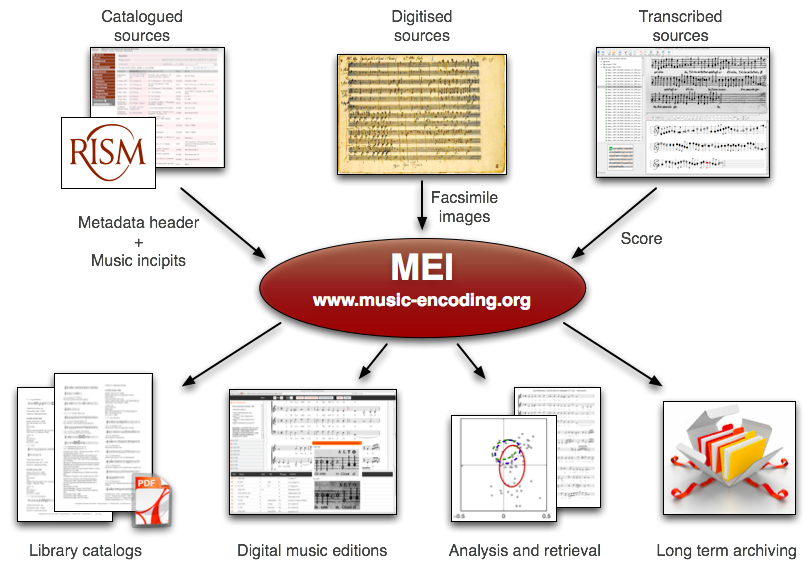Music Encoding Initiative (MEI)
{.hidden-xs style=”float: right; margin: 0px 0px 10px 30px;”}
[ ]
]
The goal of the Music Encoding Initiative (MEI) is to define an encoding standard for music sources, following the path traced by the well-known Text Encoding Initiative (TEI). The Swiss RISM contributes to this important project with its expertise in the bibliographical domain, an important component in the definition of the encoding standard.
What are the key strengths of MEI?
- It is a format devloped by a community of specialists.
- It is an open format in XML, which means human-readable.
- It is modular and can be extended for specific needs.
- It is suitable for a wide range of applications – publication, analysis, archiving.
MEI fulfils the role in many projects of making them interoperable and compatible thanks to its polymorphism, and this role is expected to increase in the future. Thanks to its wide scope, MEI is suitable for a large range of projects for which dedicated specific formats were used up to now.
The role of the RISM
1 – Expertise
Firstly, the Swiss RISM plays an important role in establishing the standard with respect to the coding of metadata. MEI distinguishes itself by a very high level of detail on this aspect and the experience of the RISM is very useful for the community.
2 – Use
The second role is that of user, since RISM Switzerland uses MEI together with TEI to produce library catalogues including musical incipits. Contrary to the way in which catalogues were produced some years ago, namely on paper, this approach offers a much more flexible solution. In the future, it will for example generate PDFs on demand directly from the RISM database.
3 – Promotion
Finally, the Swiss RISM also promotes the standard in research projects with which it collaborates. RISM Switzerland regularly participates in workshops or courses on MEI. MEI is also promoted through publications.
[ ]: www.music-encoding.org
]: www.music-encoding.org

